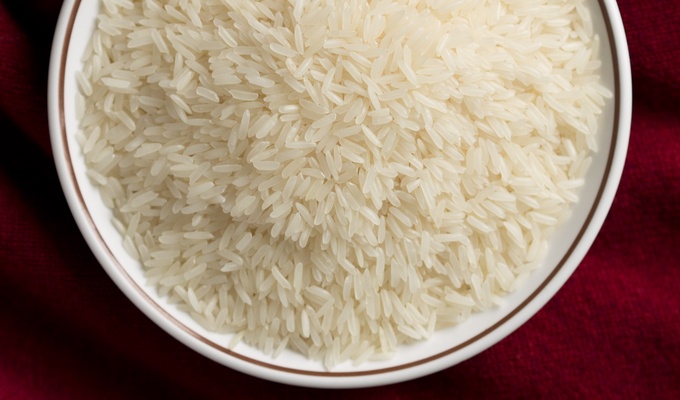Jasmine rice is a long-grain variety of fragrant rice . Its fragrance, reminiscent of pandan and popcorn, results from the rice plant's natural production of aroma compounds, of which 2-acetyl-1-pyrroline is the most salient. A rapid loss of aromatic intensity leads many Southeast Asians and connoisseurs to prefer each year's freshly harvested "new crop" of jasmine rice. Jasmine rice is a variety of Oryza sativa.
Jasmine rice is grown primarily in Thailand (Thai hom mali or Thai fragrant rice), Cambodia (phka rumduol or Cambodian jasmine rice), Laos, and southern Vietnam. It is moist and soft in texture when cooked, with a slightly sweet flavor. The grains cling and are somewhat sticky when cooked, though less sticky than glutinous rice (Oryza sativa var. glutinosa), as it has less amylopectin. It is about three times stickier than American long-grain rice.
To harvest jasmine rice, the long stalks are cut and threshed. The rice can then be left in a hulled form called paddy rice, de-hulled to produce brown rice, or milled to remove the germ and some or all of the bran, producing white rice.
